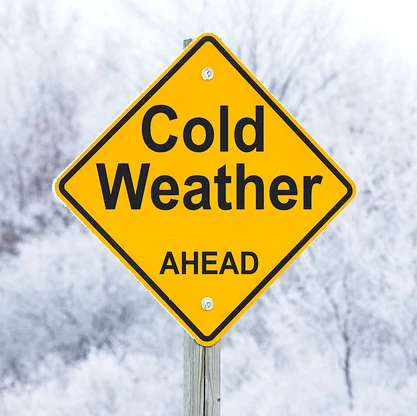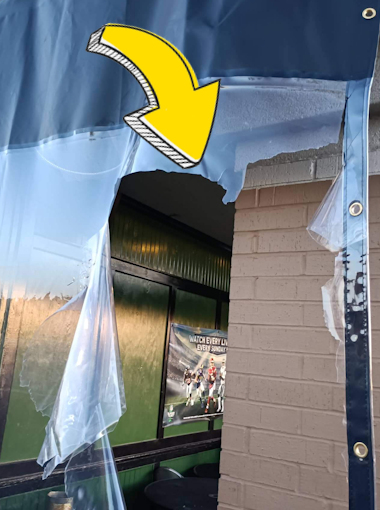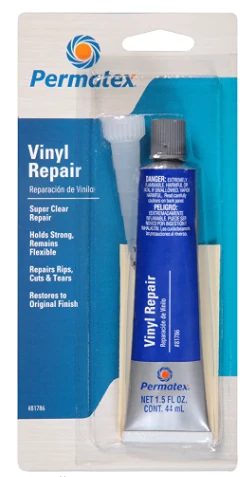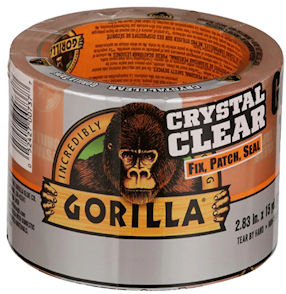What Is Cold Crack

Cold cracks are due to PVC going below a certain temperature and becoming stiff and could result in grommets popping out or the clear material can crack. It is not a common issue, but it is inherent with this type of material on both Akon and all other curtain suppliers. To prevent cold cracks, we have listed some information below.
What Causes Cold Crack
Transit or Unpacking in Cold Conditions
The curtains can get extremely cold while they are inside of the delivery trucks, especially when they pass through a very cold state on their way to your location. This type of situation can make the PVC material brittle and might end up having small cracks on the folds. This could also be a result of taking the curtains out of the box without properly warming them up first.

Extreme Cold Conditions
Clear PVC is rated for about 10° to 0° Fahrenheit. This means that within these temperature ratings, the material is "sensitive" to wind movement. So if the curtains are installed outside where there is very low temperature and substantial wind, or if trying to manipulate the material by folding it, pulling or pushing it to the sides, it could easily experience a cold crack.

How to Prevent Cold Crack
Step 1 - Let Your Material Warm Up
As mentioned above, it is very important that you let the curtains warm up first before taking them out of the box and unfolding them. We suggest leaving the material indoors at room temperature for about 24 hours before unpacking. It is also not recommended for installation in cold and windy conditions. If it can't be prevented, try not to put too much stress on any point of the curtain and make sure they are properly anchored to keep them from flapping or whipping.
Step 2 - Don't Let Your Tarp "Whip"
Cold crack is a rare issue. In fact, out of thousands of clear enclosures that we sell each year, only about 1% report cold crack. Based on these reports, it turns out that most of the cold crack issues are due to the curtain flapping or whipping in the wind. By properly securing and anchoring them to the structure and making sure that they are taut enough, chances of cracking is relatively low. Damage can also be the result of oversized curtains which snap back and forth even if they are anchored on all sides. See here for proper anchoring ideas (TIP - For Large curtains greater than 8' see the section about wind webbing)
Step 3 - "OPTIONAL" Use 30 Mil Clear
Using thicker material will also help you have more resistance against the cold. 20 Mil thick vinyl is the industry standard, but we also offer a thicker 30mil material for harsher environments. Ask your AKON representative for more information.
OPTION 4 - "OPTIONAL" Upgrade To Opaque
Using all opaque 18oz vinyl material will eliminate any chance of cold crack. Opaque material has a cold rating of -30° Fahrenheit so there is no chance for extreme cold weather damage. You will not be able to see through the material, but it's extremely strong. This is the same material used for trucking tarps and commercial bounce houses. Example Image.
How to Repair Cold Crack
For Small Spots
For small spots less than a coin size, you can use "Permatex 81786 Super Clear Vinyl Sealant Repair Kit". Just put a small amount on the spot to prevent the curtain from tearing.

For Large Spot
For larger areas, you can use a clear adhesive tape such as "Gorilla Crystal Clear Repair Duct Tape Tough".

Replacing Cold Crack Curtains
Replacing Cold Cracked Curtains
You may decide that you want to replace the curtains entirely rather than having them repaired. While cold crack is not always a warranty issue as we call out the low temperature limitations of this product on our quotes and amazon pages, we always work with our customers to come up with a palatable solution. If you would like to discuss replacements, refunds or discounts, please reach out to your AKON representative and we will be more than happy to present you with options.
